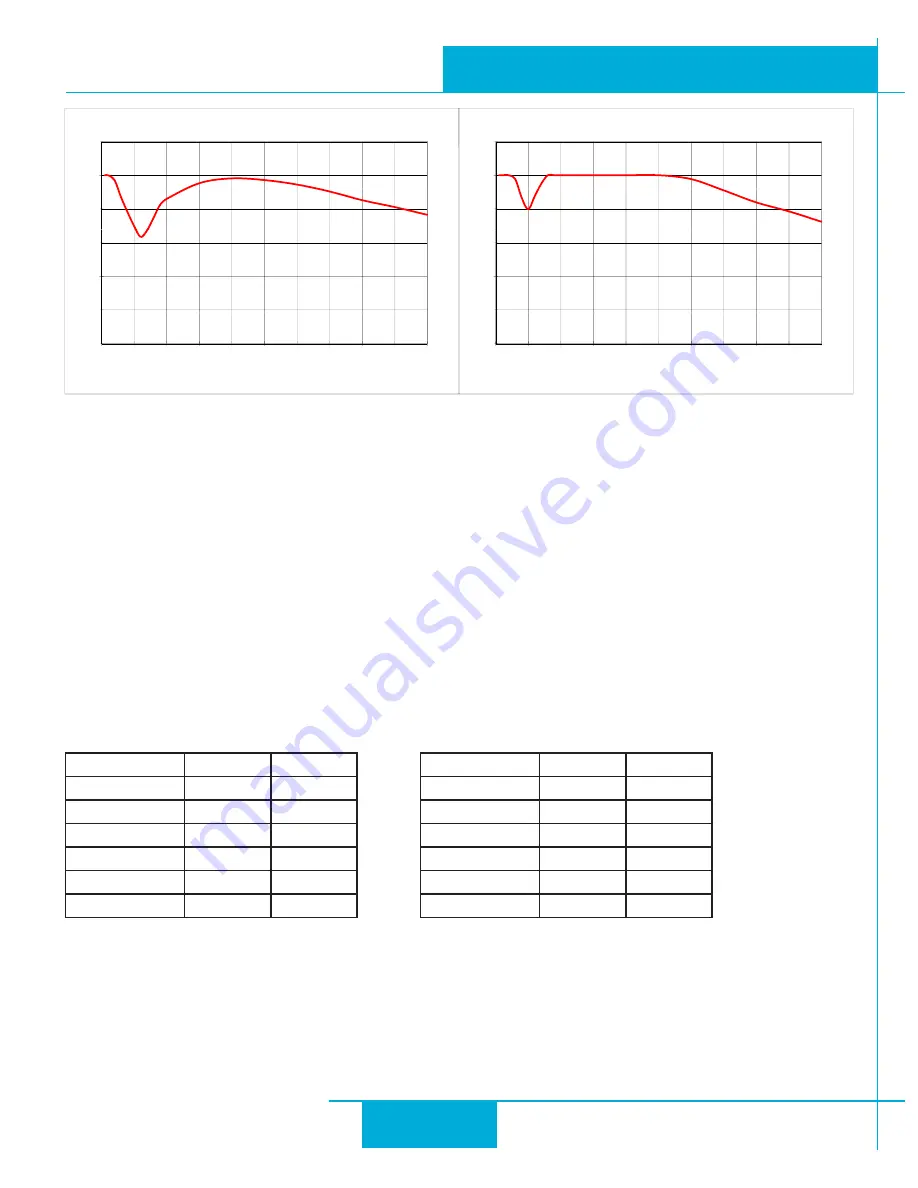
30
STAC5 Hardware manual
920-0026 Rev. B
4/22/2011
120
Duty Cycle HT34-496
100
80
e
%
60
Duty
Cy
cl
e
20
40
0
0
0 0
5 0
10 0
15 0
20 0
25 0
30 0
35 0
40 0
45 0
50 0
0.0
5.0
10.0
15.0
20.0
25.0
30.0
35.0
40.0
45.0
50.0
Speed(RPS)
120
Duty Cycle HT34-497
100
80
e
%
60
Duty
Cy
cl
e
20
40
0
0
0
5
10
15
20
25
30
35
40
45
50
0
5
10
15
20
25
30
35
40
45
50
Speed(RPS)
Drive Heating
While STAC5 drivers efficiently transmit power between the AC power and motor, they do generate some heat in the process. This will
cause the temperature of the drive to rise above the surrounding air temperature and may also require that the drive be mounted to a heat
conducting metal surface.
For those who wish to calculate the power dissipation and temperature rise, the following information
is provided:
1. drive power dissipation P
d
versus motor (see tables below)
drive thermal constant R
Q
The final drive case temperature is given by
T
c
= T
a
+ R
Q
* P
d
where T
a
is the ambient temperature of the surrounding air. The case of the drive should not be allowed to exceed 70°C or the life of the
product could be reduced.
Drive thermal constant (with drive mounted on a 15.75” x 15.75” steel plate, .040” thick): R
Q
=0.87°C/W
Max Loss vs Motor STAC5-120
Motor
Current
Loss (W)
HT23-552
1.5
9.61
HT23-553
1.5
8.99
HT23-554
1.8
10.34
HT34-495
5
28.2
HT34-496
5
24.5
HT34-497
5
24.5
Max Loss vs Motor STAC5-220
Motor
Current
Loss (W)
HT23-552
0.75
10.2
HT23-553
0.75
10.4
HT23-554
0.90
12.1
HT34-495
2.55
18.6
HT34-496
2.55
17.6
HT34-497
2.55
20.8





































